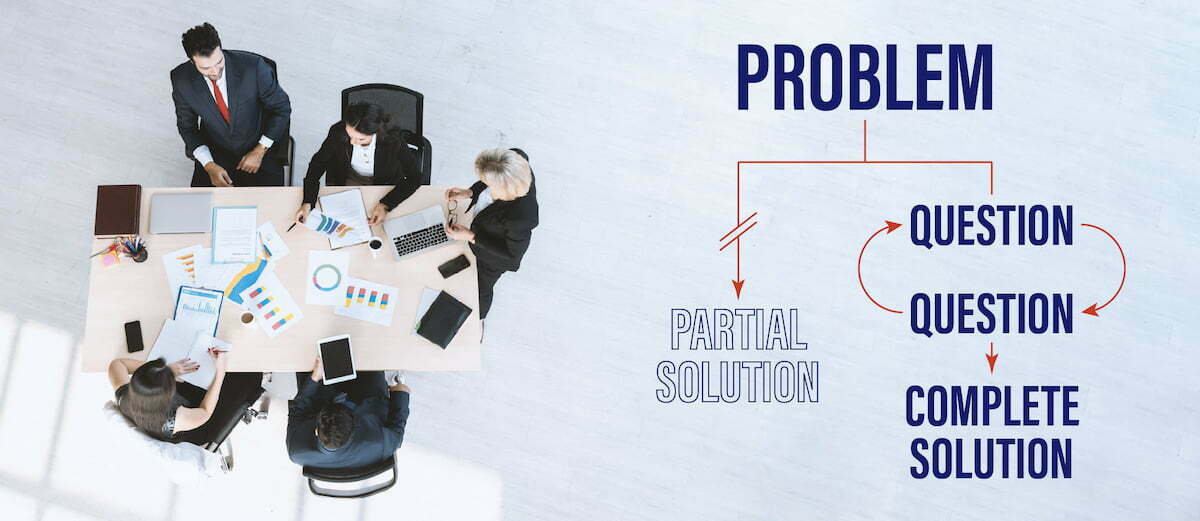Today we focus on the fourth of five strategies great problem-solvers use to break through their challenges. As a quick reminder from the previous articles on this topic, here are the five mutually reinforcing problem solving strategies common in successful problem-solving strategies:
- Don’t accept the first description of a problem as the actual core issue
- Be curious about every dynamic of an issue
- Maintain an empathetic view of the world, to see through multiple lenses
- Ensure an agreed upon definition of the issue is reached before any discussions on potential solution strategies
- Use story telling to generate a compelling call to action.
Strategy #4: Define the Problem Before Beginning Your Problem Solving Strategies
Having facilitated hundreds of annual, quarterly and ad hoc company planning sessions, the most consistent dynamic I need to referee is discussions on solving key problems. The typical dynamic is to immediately seek solutions when a problem is raised. The team then quickly forms a range of objective opinions on how best to resolve the issue. Many minutes, hours or even the entire meeting can be wasted upon investigating the first idea that presents itself without discussing alternatives. The saying of “Ready, fire, aim” seems fitting here.
Great problem solvers don’t limit themselves to focussing upon a singular problem or the first solution that seems to be viable. Rather they call upon a rarely utilised strategy of first clarifying ‘What’ the actual underlying problem is before allowing a deeper discussion to take place that will then provide the most practical, most educated problem solving strategies possible.


By continually asking yourself and your team what the problem is and what its root or cause might be, then also questioning these answers, you peel back layer upon layer of the problem until you don’t simply find the quick-and-easy (and often superficial or short-term) solution, you are able to discover its foundation. With this information, you can then strike at the heart of the problem. This brief and simple process may take an extra hour, but it will often resolve greater issues, ensuring that the problem never arises again.
Problem Solving Strategies in Action
Rarely a day goes by where an example of this problem solving strategy doesn’t rear its head. In a weekly Executive Management meeting I was facilitating today, an issue was raised about an underperforming business unit. In many meetings a great deal of time could have been spent on all the problems being observed about this particular issue. Fortunately, the CEO asked the question, “but why do we feel the business unit is struggling?” This provoked a discussion around how the Business Unit Leader (not in the meeting) was struggling with either doing what they said they would or, when the couldn’t, to proactively tell those affected that she wasn’t going to achieve the objective.
After some discussion, I asked the question, “but why is the staff member struggling with their objective?” The response from the CEO was that he was letting her off the hook and not addressing the problems as they arose. He self-diagnosed that he was the underlying problem and that he would improve his communications and engagement with her to address the issue more directly and rapidly. This lead to a different solution strategy and one that the Executive Team had more control over. Not using this problem solving strategy would have likely resulted in a very different strategy and outcome.
If this strategy seems interesting, give it a try in the next discussion you have with your team about a problem. See if you can ask a question about the cause of the problem. Continue investigating the fundamental cause of the problem until you have a general consensus from the group on what the actual issue is. Then discuss and identify a practical solution that is then tracked until completion.
Fun Fact: the same strategy can work at home! Enjoy the process and let us know your experiences.
Need more advice on problem solving? Contact us today for more financial insights

